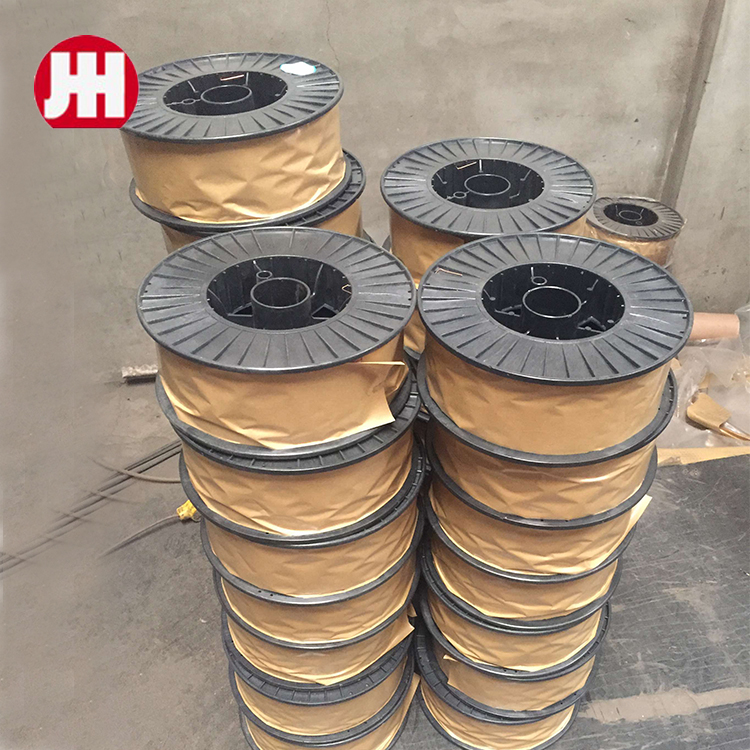electrode for welding mig
Electrode Selection for MIG Welding A Comprehensive Guide
MIG (Metal Inert Gas) welding, also known as Gas Metal Arc Welding (GMAW), is a widely used welding process that employs a continuous feed of solid wire electrodes. The selection of the appropriate electrode is crucial for achieving strong, high-quality welds that meet specific application requirements. This article will explore the various types of MIG welding electrodes, their characteristics, and considerations for choosing the right one for your welding project.
Understanding MIG Welding Electrodes
In MIG welding, the electrode itself is the filler material that fuses with the base metal to form a solid joint. The wire is fed through the welding gun, where it is melted by an electric arc formed between the electrode and the workpiece. This process takes place in the presence of a shielding gas, which protects the weld pool from contamination by atmospheric gases, thereby ensuring a clean and strong weld.
Types of MIG Welding Electrodes
1. ER70S-3 This is one of the most common MIG welding wires, made from mild steel. ER70S-3 is suitable for welding uncoated steel and is characterized by its good ductility and medium strength. It's an excellent choice for general-purpose welding applications.
2. ER70S-6 This wire contains additional deoxidizers, making it suitable for welding dirty or rusty materials. ER70S-6 provides improved weld quality and is ideal for thicker materials and out-of-position welding.
3. ER308L and ER308 These electrodes are designed for welding austenitic stainless steels. The L designation indicates low carbon content, which helps prevent intergranular corrosion. They are suitable for applications in food processing and chemical industries.
4. ER4047 This is an aluminum-silicon alloy wire that is used for welding aluminum. ER4047 provides good fluidity and is ideal for reduced thermal cracking. Its application is common in automotive and aerospace industries.
5. Flux-Cored Wire (E71T-1) Unlike solid wire, flux-cored wires contain a flux core that provides shielding gas during the welding process. This makes them ideal for outdoor applications or in windy conditions where shielding gas may be blown away.
electrode for welding mig

Selecting the Right Electrode
Choosing the right MIG electrode depends on several factors
- Material Type Consider the base metal you will be welding. Different materials (mild steel, stainless steel, aluminum, etc.) require specific types of electrodes.
- Welding Position Some electrodes perform better in certain positions (flat, horizontal, vertical, or overhead). For instance, ER70S-6 is well-suited for various positions, while certain flux-cored wires are designed for out-of-position welding.
- Joint Design The design and configuration of the joint can influence electrode selection. Thicker materials often require electrodes with higher deposition rates and strength.
- Environmental Conditions If you’re working outdoors or in windy conditions, flux-cored wires might be more suitable due to their self-shielding properties.
- Weld Aesthetics The visual appearance of the weld may also be a consideration, especially in visible applications. Some electrodes produce finer, smoother beads than others.
Conclusion
The choice of MIG welding electrode is pivotal in achieving optimal weld quality. By understanding the different types of electrodes and their specific applications, welders can make informed decisions that lead to stronger, more reliable welds. Whether you are a novice or an experienced welder, taking the time to select the right electrode for your specific needs will undoubtedly enhance both the efficiency and the quality of your welding projects.
-
Best Hardfacing MIG Wire for Sale High Durability Welding SuppliesNewsJun.10,2025
-
ER70S-6 MIG Welding Wire Supplier High Quality China Welding Wire ManufacturerNewsJun.10,2025
-
Premium Aluminum Flux Core Wire China Manufacturer FactoryNewsJun.10,2025
-
Premium Cast Iron Welding Electrodes for Superior BondsNewsJun.10,2025
-
Premium 309L MIG Wire High Strength & Corrosion ResistantNewsJun.10,2025
-
Stainless Steel Welding Rod Types Complete Guide to Corrosion ResistanceNewsJun.09,2025


